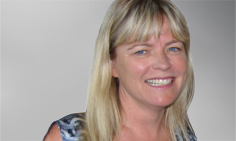AS Family Doctor Week begins, a story recounted by British GP Jonathon Tomlinson on his blog site, A better NHS, will ring true for many Australian GPs.
Tomlinson describes a consultation in which one 10-minute appointment has to stretch to accommodate three people because a scheduled patient turns up with her two daughters in tow. The situation is complicated by the family’s psychosocial problems and differing cultural expectations, while both doctor and patient harbor anxieties about diagnostic acuity and management planning. The odds seem stacked against an evidence-based antimicrobial prescribing decision.
Somehow, despite the angst, this particular consultation ends harmoniously and in line with best practice guidelines. It could easily have been otherwise. While the ideal of evidence-based medicine is that “the integration of individual clinical expertise with the best available external evidence and the patient’s values and expectations” will lead to decisions that are clearly in line with the best evidence, in reality, other factors can weigh heavily.
In this week’s MJA InSight we’re exploring situations in medicine and medical practice where the reality falls short of that considered ideal.
The authors of a “Perspective” article, published in the MJA, describe how the flow of Australia’s medical workforce has, for decades, been like a tap turned on and off by successive governments causing “boom‒bust cycles” of home grown doctors. Ideally the current torrent of new graduates should be able to flow freely to the areas and disciplines in which they are needed but reality looks more like a training logjam.
The authors raise the idea of encouraging young doctors to undertake generalist training rather than subspecialising, to increase flexibility in times of shortage or surplus. It’s a good idea according to those we interviewed for our first news story, but whether it can happen under the prevailing system for allocation of hospital training positions is another story.
An expert commenting for our second news story describes our residential aged care facilities as a “melting pot of everything that leads to poor antimicrobial stewardship”. The existence of this problem is well known but a qualitative study published in the MJA has now elucidated some of the workplace factors for nurses, doctors and pharmacists that lead to suboptimal prescribing decisions and a culture of misuse.
Another MJA study using general practice data from the Australian Sentinel Practices Research Network has revealed that, in 2012, influenza vaccination was only “modestly protective” overall in the group studied. The experts we contacted for our third news story agreed that the vaccine effectiveness in this study and elsewhere in 2012 was lower than the 70%‒90% claimed by the WHO, but urged GPs to continue vaccinating their patients while the many impediments to more effective vaccine development are exposed, discussed, researched and overcome.
Australia’s transition to e-health has also been less than ideal. In a comment this week, GP Andrew Knight, says uptake of the My eHealth Record by health professionals is “well below targets and has plateaued”.
He is not alone in thinking that the task of readying general practices for e-health is huge, and will require tremendous support. MJA Editor-in-Chief Professor Stephen Leeder has recently put forward the idea that e-health in Australia requires a stepwise, rather than an “all-in” approach — building to, rather than starting from, the ideal situation of each person having their own health record.
Thinking back to Tomlinson and his fragile patient who ended up happily leaving the consultation without an antibiotic prescription it’s worth asking what went right to produce this seemingly ideal outcome.
In another comment this week, GP James Best describes the development of his therapeutic relationship with a long-term patient
“I was like one of his old wharfie mates who had been through previous battles with him. I had his trust, his hard earned respect — in medicine, if not in chess”.
As we strive towards ideal outcomes it’s worth remembering that sometimes achieving them is a matter of putting in the “hard yards” but, as Best also says, it’s a precious gift when you get it.
Dr Ruth Armstrong is the medical editor of MJA InSight. Find her on Twitter: @DrRuthInSight

 more_vert
more_vert